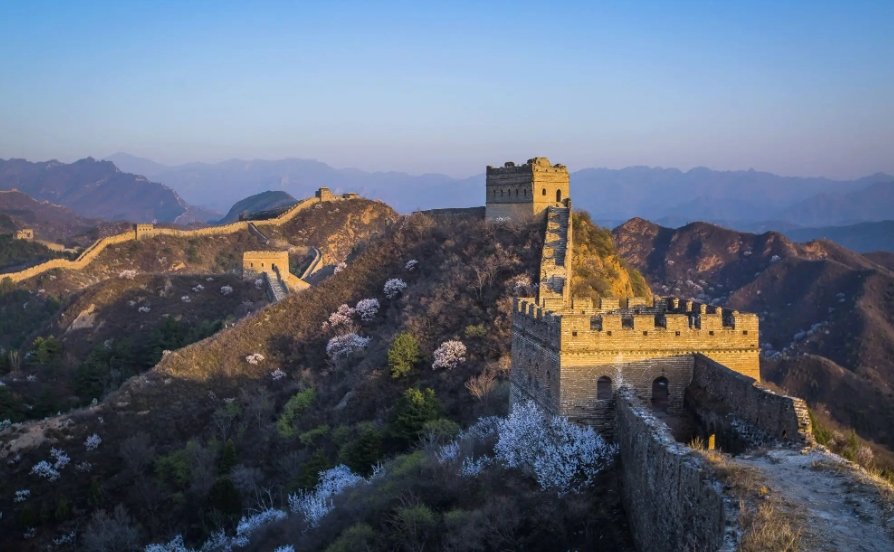
The Great Wall of China: A Monument of Defense, Division, and Trade
The Great Wall of China, a UNESCO World Heritage site and an awe-inspiring feat of ancient engineering, snakes its way across the Chinese landscape for thousands of miles. Its immense size and intricate design beg the question: why was such a colossal structure built? The answer, like the wall itself, is multifaceted. Over its extensive history, the Great Wall served three primary purposes: defense against foreign invaders, a psychological barrier between civilizations, and protection for the vital Silk Road trade route.
1. A Bulwark Against Invasion:
The most widely known purpose of the Great Wall was to defend the Chinese Empire from nomadic tribes to the north. These tribes, often fiercely independent and possessing formidable cavalry, posed a significant threat to the relatively settled agricultural societies of China. The wall, with its imposing height, strategic watchtowers, and fortified passes, acted as a formidable barrier to invasion.
Construction of the wall began as early as the 7th century BC, with various states erecting fortifications to protect their borders. However, it was during the Qin Dynasty (221-206 BC) that the first Emperor, Qin Shi Huang, undertook the monumental task of connecting and extending these disparate walls. This unification project was driven by the need to consolidate power and protect the newly unified empire from the Xiongnu, a powerful nomadic confederation.
Over subsequent centuries, various dynasties continued to expand and reinforce the Great Wall. The Ming Dynasty (1368-1644) in particular invested heavily in its construction, adding brick and stone fortifications, creating the iconic image we associate with the wall today. The Great Wall, manned by soldiers and equipped with signaling systems, allowed the Chinese to monitor enemy movements, repel attacks, and maintain control over their borders.
2. A Psychological Divide:
Beyond its physical presence, the Great Wall served as a powerful psychological barrier between the Chinese civilization and the nomadic cultures to the north. It represented a clear demarcation line, reinforcing the Chinese perception of themselves as a distinct and superior civilization. This sense of cultural distinction was further emphasized by the wall’s symbolism of order and stability against the perceived chaos and barbarity of the nomadic world.
The wall’s construction also served to regulate trade and interaction between the two civilizations. By controlling the movement of people and goods through designated checkpoints, the Chinese could manage cultural exchange and prevent unwanted influences from permeating their society.
3. Safeguarding the Silk Road:
The Great Wall also played a crucial role in securing the Silk Road, a network of trade routes that connected East and West for over 1,500 years. Sections of the wall were strategically built to protect key trading posts and routes, safeguarding the flow of goods like silk, spices, and porcelain from China to the West. By ensuring the safety of merchants and caravans, the Great Wall contributed to the economic prosperity of the Chinese Empire and facilitated cultural exchange between East and West.
Conclusion:
The Great Wall of China stands today not only as a testament to human ingenuity and perseverance but also as a powerful symbol of China’s complex history. It is a monument to the constant struggle for defense, a reminder of cultural differences, and a testament to the importance of trade and interconnectedness. Though its original purposes have faded, the Great Wall remains a potent symbol of China’s rich past and a source of national pride.
Q&A
Q: What was the main reason for building the Great Wall of China?
A: The primary reason for building the Great Wall was to protect the Chinese Empire from invasions by nomadic tribes from the north.
Q: How did the Great Wall impact trade between China and the West?
A: The Great Wall helped secure crucial sections of the Silk Road, ensuring the safe passage of merchants and goods, and thereby contributing to both economic prosperity and cultural exchange.
Q: What makes the Great Wall of China significant beyond its defensive purpose?
A: The Great Wall served as a powerful symbol of cultural division, reinforcing the distinction between the Chinese civilization and nomadic cultures. It also stands as a testament to human ingenuity, a historical landmark, and a source of national pride for China.